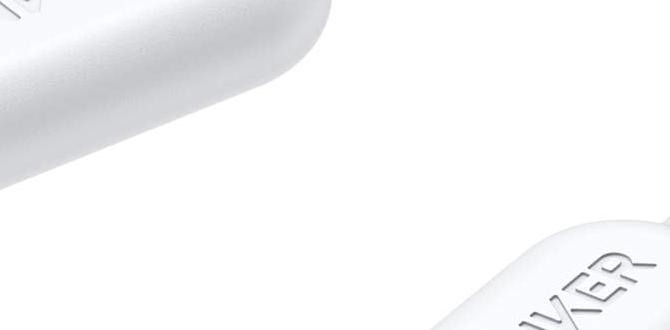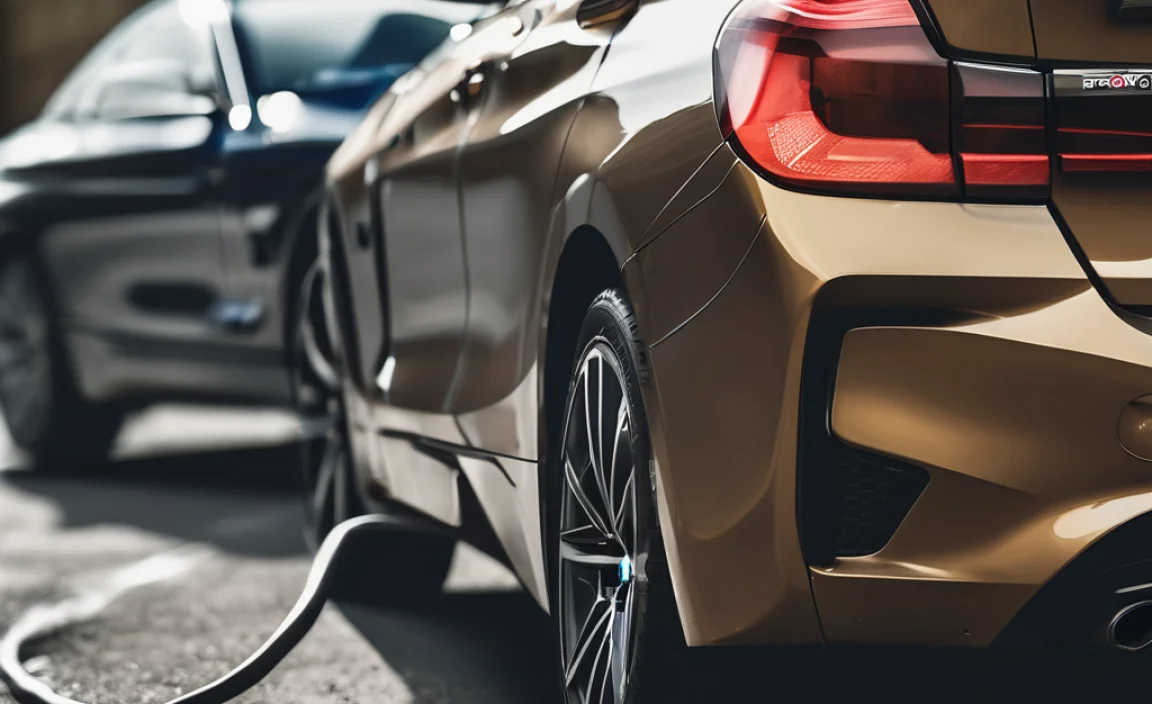Quick Summary: Finding a cheap stop-start battery for your truck is possible without sacrificing quality. Look for essential features like high cranking amps, deep cycle capability, and a good warranty. Compare prices from reputable brands and consider your truck’s specific needs to get the best value and reliable power.
Hey there, fellow drivers! Roy Walker here. Ever had your truck just… stop… when you really needed it? It’s a frustrating feeling, especially when it’s a battery issue. Modern trucks with their fancy stop-start systems need a special kind of battery to keep up.
These batteries are designed to handle the frequent engine restarts that save fuel and reduce emissions. But when it’s time for a replacement, the cost can feel like a bit of a blow. Don’t worry, though! Getting a reliable, budget-friendly stop-start battery for your truck is totally doable.
This guide is here to make things simple. We’ll walk through what makes a good stop-start battery, how to find affordable options that still pack a punch, and what to look out for. We’ll cover everything you need to know to keep your truck running smoothly without breaking the bank.
Why Your Truck Needs a Specific Stop-Start Battery
You might be thinking, “Why can’t I just use any old car battery?” That’s a fair question! The technology in modern trucks, particularly the stop-start systems, puts a lot more demand on the battery than older vehicles. Let’s break down why a specialized battery is so important.
Stop-start systems work by automatically shutting down the engine when the vehicle is stationary (like at traffic lights) and then restarting it when you lift your foot off the brake or press the clutch. Doing this hundreds, maybe thousands, of times a year really strains a regular battery. It needs to be able to handle a lot of deep discharges and rapid, powerful recharges.
The Demands of Stop-Start Technology
Here’s what these systems demand from a battery:
- Frequent Starts: The engine starts and stops many more times than in a car without this feature. Each start draws a lot of power.
- Deep Discharges: When the engine is off, the battery might be powering accessories like the radio or lights for longer periods. This means the battery gets drained more deeply.
- Rapid Recharging: When the engine starts up again, the alternator needs to quickly replenish the battery’s charge.
- Stable Voltage: Consistent power is crucial for all the sensitive electronics in a modern truck.
Using a standard battery in a truck equipped with stop-start technology is like asking a sprinter to run a marathon without training. It will likely fail prematurely, potentially leaving you stranded and costing you more in the long run to replace it sooner.
Understanding Stop-Start Battery Types: EFB vs. AGM
When you’re looking for a stop-start battery, you’ll mostly see two main types: EFB (Enhanced Flooded Battery) and AGM (Absorbent Glass Mat). They’re both designed for these demanding systems, but they have differences, and knowing them can help you find the right, affordable option.
EFB Batteries: The Budget-Friendly Workhorse
EFB batteries are often the more affordable choice for stop-start vehicles. They’re an upgrade from traditional flooded lead-acid batteries but not quite as robust as AGM. Think of them as the sensible, reliable option for many drivers.
How they work: EFB batteries have a slightly different internal structure that allows them to withstand deeper discharge cycles better than a standard battery. They also manage heat and vibrations more effectively, which is important in a truck.
Pros:
- More affordable than AGM batteries.
- Good performance for basic stop-start functions.
- Widely available.
Cons:
- Not as resilient as AGM for very heavy stop-start use or extreme conditions.
- Shorter lifespan than AGM batteries under heavy load.
Who they’re best for: For trucks with less aggressive stop-start cycling or drivers who want a cost-effective replacement that still meets the basic requirements.
AGM Batteries: The Premium Performer
AGM batteries are generally considered the gold standard for stop-start systems, especially in trucks with more advanced features or high electrical demands. They are more expensive upfront but often offer a longer lifespan and better performance.
How they work: In an AGM battery, the electrolyte is absorbed into fiberglass mats between the lead plates. This sealed design makes them spill-proof, vibration-resistant, and allows them to handle deeper discharges and faster charging cycles much better than flooded batteries (even EFB). For more information on battery types, the U.S. Department of Energy’s Vehicle Technologies Office provides great insights into battery advancements.
Pros:
- Superior performance for intense stop-start use.
- Longer lifespan.
- More resistant to vibration and deep discharge.
- Can handle higher electrical loads.
- Spill-proof and maintenance-free.
Cons:
- More expensive upfront costs.
- Require a compatible charging system to reach full potential.
Who they’re best for: Trucks with advanced stop-start systems, higher electrical accessories, or drivers who face extreme temperatures and demanding driving conditions.
Finding a “Cheap” Stop-Start Battery: What to Look For
The word “cheap” often gets a bad rap when it comes to car parts, but it doesn’t have to mean low quality. For a stop-start battery, think “value for money” and “smart purchase” instead. Here’s what to focus on to get the most bang for your buck without compromising reliability.
Essential Features to Prioritize
When you’re shopping for a battery, whether it’s a budget-friendly EFB or a more economical AGM option, keep these crucial features in mind:
- Cold Cranking Amps (CCA): This is a measure of how much power the battery can deliver to start your engine in cold weather. For trucks, especially if you live in a colder climate, you’ll want a higher CCA rating. Check your truck’s owner’s manual for the recommended CCA.
- Reserve Capacity (RC): This tells you how long the battery can supply power if the alternator fails. A higher RC means more backup power, which is useful for running electrical accessories when the engine is off.
- Voltage: Most truck batteries will be 12-volt, but ensure it matches your truck’s electrical system.
- Size and Terminal Type: Batteries come in different physical sizes (Group Size) and have different terminal placements and types. Make absolutely sure the battery physically fits in your truck’s battery tray and that the terminals are compatible with your truck’s cables. Your owner’s manual or a good auto parts store can help you find the correct Group Size.
- Warranty: A good warranty is your best friend when looking for value. A longer warranty period (e.g., 2-3 years) on an EFB or 3-5 years on an AGM from a reputable brand is a strong indicator of the manufacturer’s confidence in their product.
- Brand Reputation: Stick with well-known battery brands. While they might not always be the absolute cheapest, they tend to offer better quality control, longer lifespans, and better warranty support. Brands like Bosch, Odyssey (often AGM), ACDelco, and Duralast are generally reliable picks.
Comparing EFB and AGM Price vs. Lifespan
This is where the “cheap” really comes down to understanding what you’re paying for over time. An EFB battery might be cheaper upfront, but if it lasts only half as long as an AGM battery under your driving conditions, it might not be the better deal.
| Battery Type | Typical Upfront Cost (USD) | Estimated Lifespan | Best For |
|---|---|---|---|
| EFB | $120 – $200 | 3-5 years (heavy use may reduce this) | Moderate stop-start systems, budget-conscious drivers |
| AGM | $180 – $300+ | 5-8 years (heavy use may reduce this) | Heavy stop-start systems, high electrical demands, extreme climates |
Example Scenario: Let’s say an EFB costs $150 and lasts 4 years. That’s roughly $37.50 per year. An AGM battery costing $250 that lasts 7 years is about $35.71 per year. In this case, the AGM is cheaper per year of service, even with its higher initial price.
Always check the specific warranty offered by the retailer and manufacturer, as this is your biggest protection against early failure.
Where to Find Affordable Stop-Start Batteries
You don’t necessarily need to go to the dealership to find a decent stop-start battery. Many places offer competitive pricing and good options. Here are some reliable spots to check:
- Auto Parts Stores: Big box auto parts retailers like AutoZone, Advance Auto Parts, O’Reilly Auto Parts, and Pep Boys often have a wide selection of EFB and AGM batteries from various brands. They frequently run sales and promotions.
- Online Retailers: Websites like Amazon, Walmart, and specialized auto parts sites (e.g., RockAuto for a wide range of OE and aftermarket parts) can offer competitive prices. Be sure to check shipping costs and return policies.
- Discount Retailers: Some larger discount stores with automotive sections might carry decent battery options at lower prices.
- Warehouse Clubs: Stores like Costco or Sam’s Club often have their own branded batteries that offer good value and decent warranties.
Pro Tip: Before buying, call a few local auto parts stores and compare their prices and brands. Sometimes, they’ll have brand-name batteries on sale that make an AGM option surprisingly affordable.
DIY: Replacing Your Truck’s Stop-Start Battery Safely
Replacing a truck battery isn’t overly complicated, but safety is paramount. These batteries store a significant amount of electrical energy, and mishandling can be dangerous. If you’re not comfortable, always hire a professional. But if you’re up for it, here’s a step-by-step guide.
Tools and Materials You’ll Need
Gathering everything before you start will make the job much smoother and safer.
- Your New Stop-Start Battery: Ensure it’s the correct type, size, and has adequate CCA for your truck.
- Socket Wrench Set: You’ll likely need a 10mm, 12mm, or 13mm socket and extensions to remove the battery terminals and hold-down clamp.
- Safety Glasses: Crucial for protecting your eyes from battery acid or debris.
- Gloves: To protect your hands from battery acid and keep them clean.
- Wire Brush or Battery Terminal Cleaner: For cleaning corrosion from the battery terminals and cable clamps.
- Anti-Corrosion Spray or Grease: To protect the terminals after installation.
- Battery Terminal Pliers (Optional): Can make removing corroded clamps easier.
- Memory Saver (Optional but Recommended): A small device that plugs into the OBD-II port to keep your truck’s computer settings (radio presets, clock, etc.) from erasing while the battery is disconnected. You can find these at auto parts stores.
Step-by-Step Battery Replacement Guide
Remember, safety first! If anything feels wrong, stop and get help.
- Park Safely and Turn Off the Engine: Ensure your truck is on a level surface, the parking brake is engaged, and the engine is completely off with the keys removed. Allow the engine to cool down.
- Open the Hood and Locate the Battery: Batteries are usually in the engine bay, often on one side. Disconnect any covers that might be obstructing access.
- Disconnect the Negative Terminal First: This is the most critical safety step. The negative terminal is usually marked with a “-” symbol and has a black cable. Use your socket wrench to loosen the nut on the negative terminal clamp. Wiggle the clamp off the terminal post. Move it aside so it can’t accidentally touch the battery post.
- Disconnect the Positive Terminal: The positive terminal is marked with a “+” symbol and has a red cable. Loosen and remove the clamp from the positive terminal post.
- Remove the Battery Hold-Down Clamp: Most batteries are secured with a bracket or clamp at the base or top. Remove the bolts holding this clamp in place.
- Carefully Remove the Old Battery: Batteries are heavy! Lift straight up, using your legs to do the lifting, not your back. Try to keep it level to avoid spilling any acid. If it’s too heavy, get someone to help you.
- Clean the Battery Tray and Cable Clamps: Inspect the battery tray for corrosion or debris. Use a wire brush to clean any rust or buildup. Thoroughly clean the inside of the cable clamps with a wire brush or terminal cleaner until they are shiny and free of corrosion.
- Install the New Battery: Carefully lower the new battery into the tray, ensuring it’s oriented correctly (positive and negative terminals in the same position as the old one).
- Secure the Battery Hold-Down Clamp: Reinstall the clamp and tighten the bolts to firmly secure the battery. It shouldn’t be able to rock or move.
- Connect the Positive Terminal First: Place the positive cable clamp onto the positive battery post and tighten the nut securely.
- Connect the Negative Terminal Last: Place the negative cable clamp onto the negative battery post and tighten the nut securely.
- Apply Anti-Corrosion Protection: Spray or apply a thin layer of anti-corrosion grease to the terminals and clamps. This will help prevent future corrosion. For more on vehicle maintenance, resources like NHTSA’s website on vehicle equipment offer general vehicle care tips.
- Close the Hood and Start the Engine: Double-check all connections. Close the hood and start your truck. It should start up as usual. You might need to reset your clock or radio presets if you didn’t use a memory saver.
Important Note: If your truck has a battery management system (BMS) or a sensor on the negative battery cable, replacing the battery might require the new battery to be “registered” or “coded” to the vehicle’s computer. This ensures the BMS correctly manages charging. Some newer trucks absolutely require this; otherwise, the new battery might not be charged or could be damaged. Check your owner’s manual or consult a mechanic if you suspect your truck has this system.
Maintaining Your Truck’s Battery for Longevity
You’ve found a great deal on a new battery, congratulations! Now, how do you make it last as long as possible? A little bit of regular care can go a long way in extending your battery’s life and ensuring you don’t face unexpected breakdowns.
Simple Steps for a Longer Battery Life
- Keep Terminals Clean: Check your battery terminals every few months. If you see any white or bluish powdery buildup (corrosion), clean it off with a wire brush and rinse with a little water and baking soda mixture. Dry thoroughly and apply anti-corrosion spray or grease.
- Ensure a Secure Fit: A loose battery can be damaged by vibrations and can also cause intermittent electrical problems. Check that the hold-down clamp is still tight, especially after driving on rough roads.
- Avoid Deep Discharges (When Possible): While stop-start batteries are designed for this, constantly draining them very low will shorten their lifespan. Try not to leave accessories running with the engine off for extended periods.
- Monitor Voltage: If you have a voltmeter or a good OBD-II scanner, you can check your battery’s voltage occasionally when the engine is off and when it’s running. A healthy battery should read around 12.6 volts when fully charged and off, and around 13.7-14.7 volts when the engine is running.
- Protect from Extreme Temperatures: While you can’t control the weather, try to park in a garage or shaded area when possible to reduce extreme heat or cold exposure, which can stress a battery.
- Regular Driving: Short, infrequent trips don’t give the alternator enough time to fully recharge the battery after all the stop-start cycles. Try to take your truck for a longer drive (30 minutes or more) at least once a week to ensure it’s getting a good charge.




